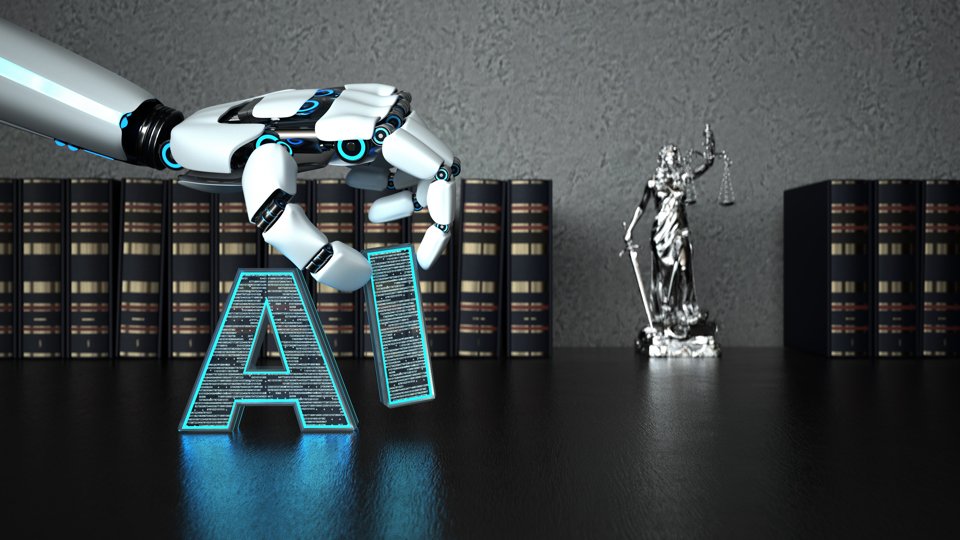Authorising the Algorithm — what the first AI-driven law firm signals for legal practice

On 6 May the Solicitors Regulation Authority announced it had authorised Garfield.Law Ltd to provide regulated legal services in England and Wales – the first purely AI-based firm approved to do so. Dr Corsino San Miguel looks at this latest development in the evolution of legal services.
From paperclips to protocols
Not all revolutions begin with a manifesto. Some begin with a paperclip. In law, we are trained to find meaning in precedent, in structure, in the weight of what has come before. But sometimes, it is the modest object – the overlooked form, the forgotten invoice, the procedural step no one wanted to own – that quietly rewrites the rules. Garfield.Law, a small firm focused on the most unglamorous of legal processes (small debt claims), has become the unlikely harbinger of something larger: a redefinition of what it means to be a law firm in the age of artificial intelligence (AI). This is not disruption for its own sake, nor the triumph of code over counsel. What the Solicitors Regulation Authority (SRA) has authorised is more subtle – and more consequential: a system built not around lawyers but around law itself. A structure in which the first move is not human input but human oversight.
The recent authorisation of the first AI-driven law firm by the SRA marks an inflection point in the evolution of regulated legal services in the UK. For the first time, a law firm has been authorised not on the strength of its associates but on the architecture of an AI-powered litigation assistant. The implications are deep – not only for English and Welsh practice but for the broader legal profession navigating the realities of AI-enabled justice.
Architecture of justice: AI as legal infrastructure
At first glance, Garfield’s offering is narrow and pragmatic: an AI-powered system designed to assist small- and medium-sized enterprises in recovering unpaid debts under £10,000 via the small claims process. The service is tailored to a legal niche often overlooked – high-volume, low-value disputes where the economics of traditional representation break down. With pre-action letters priced at just £2 for a gentle chaser and £7.50 for a formal letter before action, Garfield is not seeking margin – it is targeting scale. Yet beneath this modest entry point lies a deeper transformation: a domain-specific system that translates legal procedure into executable architecture, adhering rigorously to the Civil Procedure Rules while moving the user from triage to trial with minimal friction.
The platform can perform every step a lawyer or litigant might take up to and including trial. It begins by assessing the claim’s validity – checking limitation periods and legal sufficiency – before generating the mandated pre-action letters. If unpaid, it drafts and submits claim forms, replies to admissions or defences, handles counterclaims and manages document production. It prepares the trial bundle, a short skeleton argument, and can assist with settlement negotiations – all while keeping the user in control. Critically, Garfield is not autonomous. Each move is client-approved. It avoids known AI pitfalls – notably the hallucination of case law – and is overseen in its early stages by an experienced litigator. In form and function, it mimics a law firm (workflows) more than it replaces one. In price and speed, it promises to outperform.
Access to justice: bridging the economic divide
This type of capability is rooted in a goal many in the profession share: improving access to justice for those who cannot economically justify engaging a lawyer for small claims. It reflects that mission – not as a challenge to professional value but as a pragmatic response to market gaps that traditional law firms cannot sustainably serve. As Lord Justice Birss, Deputy Head of Civil Justice, observed at the Civil Justice Council’s 13th National Forum, ‘Access to Justice: Working Together’, platforms like Garfield are “absolutely at the core of what we can do for access to justice”. His words highlight a growing consensus that technology, when developed responsibly and in alignment with legal standards, can complement the work of lawyers and support the broader justice system. Garfield may be the first of its kind, but it points toward a future where legal professionals, courts and carefully designed AI systems work in tandem to extend justice to those historically left out – not by neglect but by economics.
Beyond assistants: towards agentic AI in law
For legal professionals, Garfield represents both a tool and a mirror. Law firms may white-label the platform or deploy it to scale small debt recovery without increasing fixed costs. But more than that, Garfield poses a question: if we can automate procedural precision affordably and responsibly, what space remains for the lawyer – and what new responsibilities emerge?
This development builds directly on the trajectory I outlined in ‘From metal behemoths to agentic AI’, where I argued that law firms must shift from reactive tool adoption to proactive strategic design. Garfield’s model exemplifies this shift – not merely bolting AI onto legal processes but rethinking how a firm itself might be constructed around algorithmic intelligence, while maintaining the regulatory and ethical frameworks, professionalism and human oversight on which trust in the legal system depends. In doing so, it reflects the broader industry evolution I described – a move beyond assistants to co-workers, where AI no longer supplements discrete legal tasks but orchestrates multi-step workflows that mirror, and in some cases refine, legal reasoning itself. Garfield’s rule-based precision, combined with its dynamic interface and supervised autonomy, illustrates what agentic AI can look like when operationalised responsibly in legal practice.
Conclusion: a case study in innovation and regulation
The SRA has taken care to emphasise accountability: regulated solicitors remain liable for outputs, and consumer protections are preserved. Yet this moment is not merely about regulation. It is about the recalibration of legal service design, and about shifting the locus of legal knowledge from the practitioner to the system.
This is where Scotland – and indeed any jurisdiction watching – must pay attention. Garfield is the first, not the last. The challenge is no longer theoretical. It is architectural, practical and professional. How do we maintain public trust when part of the work is done by code? How do we train new lawyers when systems like Garfield may handle their early tasks with more speed and consistency? And how do we – as a profession – define our value when systems deliver ‘access to justice’ with a drag-and-drop interface?
None of this diminishes the achievement. Quite the contrary. It is a responsible, disciplined example of what AI can do when built within, not outside, the system. And for jurisdictions like Scotland that have not yet approved such a model, it is a timely case study – not only in innovation but in regulation done right.
Written by Dr Corsino San Miguel PhD, LLB in Scots law and graduate in Spanish law; co-founded and led European Telecom Company before entering academia. He is now a member of the AI Research Group and the Public Sector AI Task Force at the Scottish Government Legal Directorate. The views expressed here are personal.






